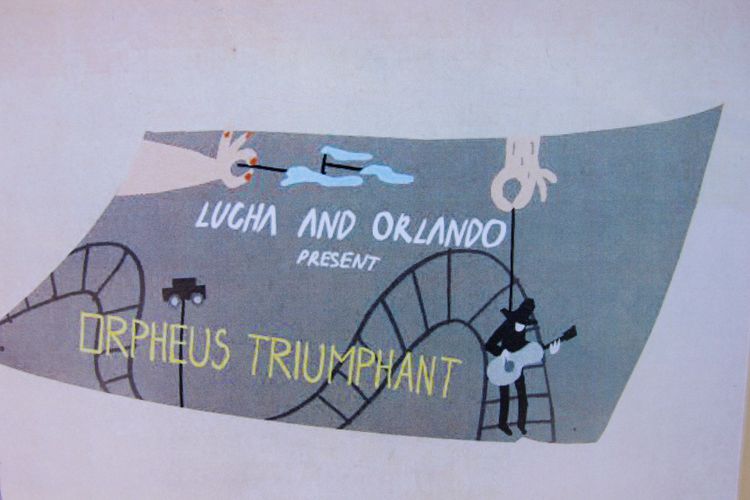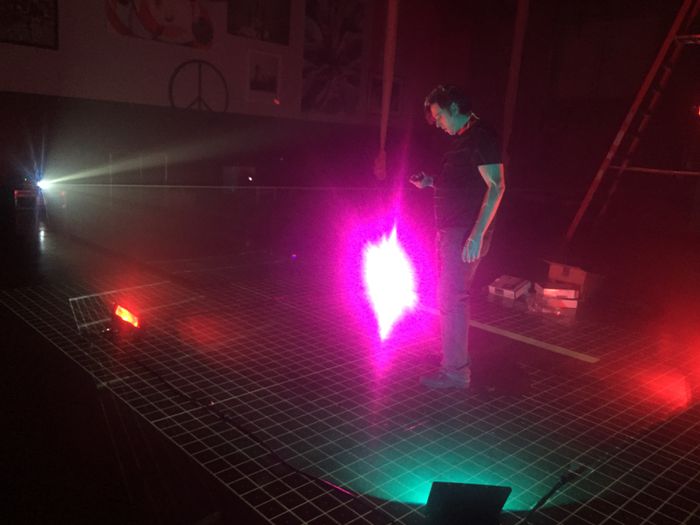-
Chapter 2 CrashRed Route - An intersection in Boyle Heights
Lucha and Jamson exchange information in the aftermath of their accident.
-
Chapter 4 Lucha's Quinceañera SongRed Route - Mariachi Plaza, Boyle Heights
Lucha remembers the day she left her childhood behind.
-
Chapter 6 Jameson PortraitYellow Route - The 2nd Street Tunnel, Downtown Los Angeles
Jameson contemplates the multifaceted nature of his personality.
-
Chapter 7 The ReunionYellow Route - A Rehearsal Studio in the Arts District
Lucha and Jameson connect at Lucha's performance of Orpheus and Eurydice.
-
Chapter 8 First KissRed Route - Hollenbeck Park, East Los Angeles
Romance blooms on Lucha and Jameson's first date.
-
Chapter 9 Angel's PointGreen Route - Angel's Point, Elysian Park
Lucha and Jameson share a passionate physical experience.
-
Chapter 11 The Floating NebulaGreen Route - The Corn Fields, Los Angeles State Historic Park, Chinatown
The metaphysical peak in Lucha and Jameson's love.
-
Chapter 12 WeddingYellow Route - City Hall, Downtown Los Angeles
On their wedding day, Lucha gives Jameson a fateful gift.
-
Chapter 14 The Phone Call, Part 1Red Route - Traversing between the Arts District and Boyle Heights
Lucha receives a mysterious phone call from a voice she seems to recognize.
-
Chapter 17 Orlando's FairwellRed Route - Evergreen Cemetery
Before leaving Los Angeles, Orlando pays his last respects to his wife.
-
Chapter 18 Interlude (Car Wash)Green Route - AirStream Trailer, Elysian Park
Reflect on the impact of a location's geography on a person's psyche.
-
Chapter 24 The Red NotebookRed Route - Utter darkness
In a state of darkness, Lucha is haunted by Jameson's red notebook.
-
Chapter 25 The Other WomanYellow Route - The Bradbury Building, Downtown Los Angeles
Still submerged in darkness, Lucha dreams of Jameson's infidelity.
-
Chapter 26 HadesGreen Route - Bowtie Parcel, Los Angeles River
Lucha descends to the underworld in search of Jameson.
-
Chapter 28 Lucha and Orlando in LoveYellow Route - Historic Core, Downtown Los Angeles
After years apart, Lucha and Orlando reunite in Los Angeles.
-
Chapter 33 Farewell From the Roof TopsRed Route - Rooftops, Toy Factory Lofts, Biscuit Lofts, Ito Building Tower, Arts District
Lucha makes peace with Jameson's disappearance.

The Reunion
Orlando: Maximiliano Torandell
Jameson: Jameson Cherilus
Music by Odeya Nini
Text by Jane Stephens Rosenthal
Director’s Notes:
“Jameson follows the address on the back of the postcard he got in Chapter 2 and walks into a beautiful warehouse in the Arts District. He’s instantly transformed by what he sees: Orlando as an aerialist floating through the space, with Lucha following him with a puppet of Orpheus. They’re rehearsing for a performance of the Orpheus and Eurydice myth, which for them ends with Orpheus successfully leading Eurydice out of the underworld.

The Myth of Orpheus and Eurydice
In arguably the most famous of Greek tragedies, the musician Orpheus marries his beloved Eurydice, who unexpectedly dies on the day of the wedding by snakebite. Distraught, he crosses the River Styx to the Underworld with the help of the gods in order to retrieve her. His music captivates Hades and Persephone, who allow him to return to the mortal realm with Eurydice as long as he never turns around to face her. Every telling involves Orpheus’ failure.
“They walk out of the warehouse together and share a sweet scene: Lucha defends her version of the ending, saying that Orpheus succeeding is her way of creating aspirational art. She turns the myth into a story about transcending our weaknesses. It’s so irresistible to Jameson, and he impulsively asks her out.
“This chapter was meant to be about recovery and reunion, finding someone you took for lost or disappeared. The Orpheus myth offers a mythical backdrop for that to happen, especially Lucha’s ‘revisionist’ version of the story. Jameson’s unexplained disappearance later in the story will challenge the hopeful message Lucha expresses here.
Composer and performer Odeya Nini describes how her relationship with her scene partner, Maximiliano Torandell, changed throughout Hopscotch
“I first approached Bob Baker’s legendary Marionette Theater on 1st St. as the site of this chapter. When the dates didn’t work out because of their popular Halloween shows, the Aileen Getty Foundation generously offered us the use of their private Pilates and aerial studio.
“When we confirmed this space, all the aerialist equipment made it clear to me that the right way to activate the space was by having Orlando’s contribution to the performance be an aerialist act.
“The experience of walking alone on a seemingly deserted street, among rows of non-descript exteriors, and then suddenly opening a door to find yourself in a magical and creative space is, to me, an essential LA happening.
“It’s a perfect example of how all of Hopscotch came together: we let each situation guide the process and shape the piece.

“Creating a narrative arc for Hopscotch was often inspired by the desire to create contrasting situations, from one chapter to another and within each individual route. The idea for this chapter as a ‘puppet theater’ performance came about after securing the Million Dollar Theater for Chapter 33 as a site of mourning the past. I thought it would be powerful for audiences on the Yellow Route to have two different visions of theater on the same route –three, if you count their own reflections on the theatrical experience of Hopscotch. Chapter 33 was a longing for the past, as Lucha wanders the balcony of a majestic, empty theater and sees Monteverdi’s Orpheus from a great distance, while Chapter 7 offered an opposite atmosphere: more immediate, visceral, and forward-looking. It was also disarmingly straightforward and un-polished, not only indicating Lucha and Orlando’s more meager means as young artists, but their own aspirational hopes for the future.”
– Yuval Sharon
Lindsay Patterson speaks about the joy of starting the Finale at The Central Hub
